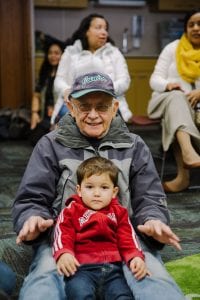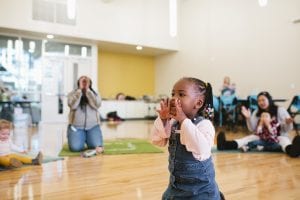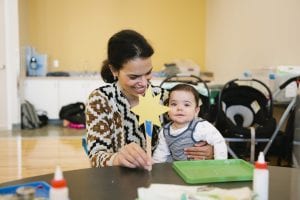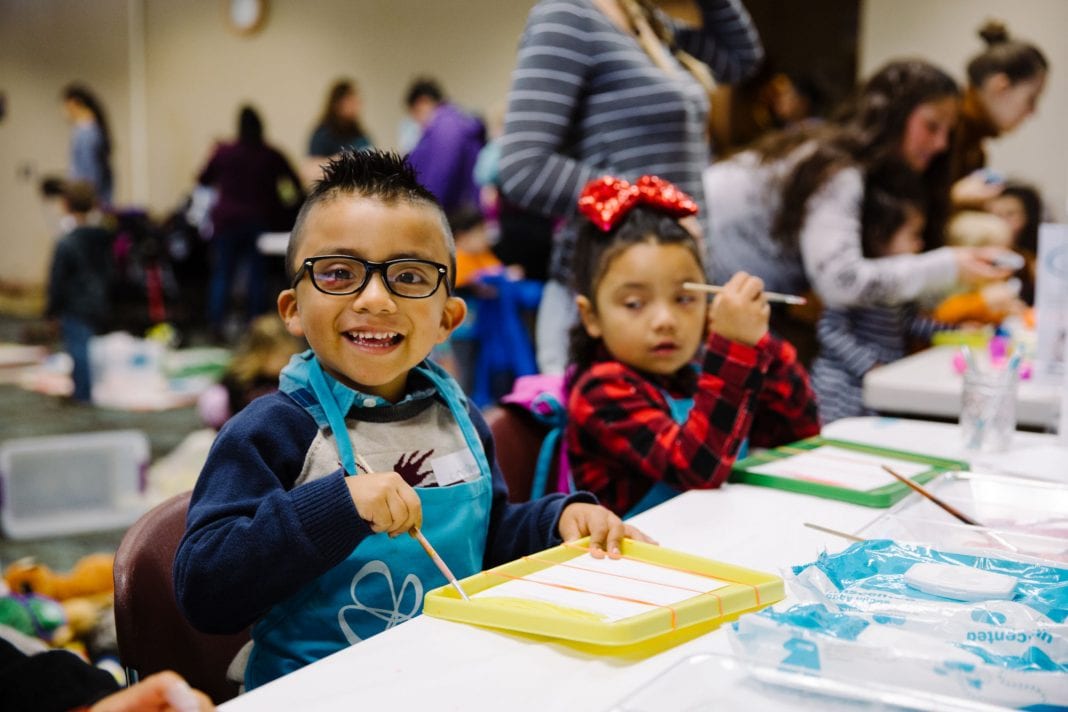Having young children means being on the constant lookout for ways to keep your kids active, entertained and learning, but also to have fun along the way. And it’s not always easy. You might cycle through swim lessons, story times at the library, trips to the park, and back again, and you might still feel like you haven’t quite found that perfect something that offers a mix of learning and play all in one spot.
Enter Play to Learn with the Children’s Museum of Tacoma.

Play to Learn is a unique program that takes place at locations all around Pierce County. It’s designed for kids and their primary caretakers (including parents, other relatives and friends) to play together and have fun.
“Play to Learn was piloted in the fall of 2008,” says Charleen Eucogco, Program Manager for Play to Learn. “The program began with four sites and served over 6,000 participants its first year and has reached over 128,000 participants since its inception. Eleven years later, the program is at over 20 sites across Pierce County.”
Best of all – Play to Learn is free. “Play to Learn is a grant funded program that through the generous support of our funders and supporters has continued to remain free and accessible to more families across Pierce County,” adds Eucogco. “This past year, we have expanded at two locations through the support of Graduate Tacoma, Tacoma Public Library – Moore Branch, and the East Side Community Center. We hope to continue to grow throughout Pierce County and inspire other institutions to create accessible and playful opportunities for children.”
No registration is required and you can drop-in at your convenience. Each class runs for an hour and a half and there are a few different start times. Staff and volunteers from the Children’s Museum of Tacoma are always on hand and serve to guide certain portions of the classes, as well as to provide resources and coaching.

Play to Learn welcomes kids six and younger and all ages interact. “The program is not divided into age groups, since many families have multiple children, and part of the experience for children and adults is learning to share a space with others,” explains Eucogco. “For older children, it could be opportunities for them to learn different ways to interact and share space with younger children, and our youngest have a chance to observe and learn for their older peers.”
What to Expect
When you show up to a Play to Learn location, you’ll sign into the class. Class sizes range depending on the location and who shows up. While most classes tend toward 30-40 adults and kids, the largest sites can top 100 participants while smaller classes might have just 10.
You’ll then be greeted by learning toys of all shapes and sizes – many are located on area rugs throughout the room, but also expect art or science activities at tables, or sensory activities like giant bins filled with rice and scoopers. The science and art activities change each week based on a theme. “We encourage adults to let their children to take the lead in choosing where they would like to explore,” says Eucogco.

Next is Circle Time – a time when the staff and volunteers lead the group in songs, dancing, maybe a story, bubbles, games and other group fun. Circle Time is a great time for kids of varying ages to interact and learn from one another, but at the same time, not every child is expected to participate. Have a kid who isn’t ready to be done playing? No worries. The toys are moved outside of the circle, but aren’t put away so you can keep on playing if that works better.
“As we always strive to meet children where they are at, Circle Time is a chance for children to practice the more structured moments of sharing space and working together as a community of learners. It is encouraged, but always an invitation for families,” says Eucogco. “Those who may not be able to participate in the entirety of circle time are welcome to experience circle time in the peripherals, and can play quietly outside of circle with the support of their adults.”
After Circle Time, participants can continue to play and then there is one more Circle Time to say goodbye for the day at the end of class. On your way out, kids can get their hands stamped if they’d like, and parents can pick up a handout with ideas for books, songs and activities.
Classes run from August to May each year. A full schedule of locations, times and dates can be downloaded from the Children’s Museum of Tacoma website.
Sponsored













































